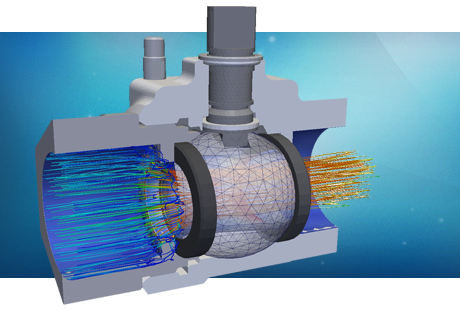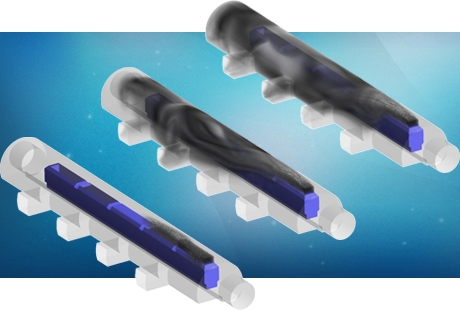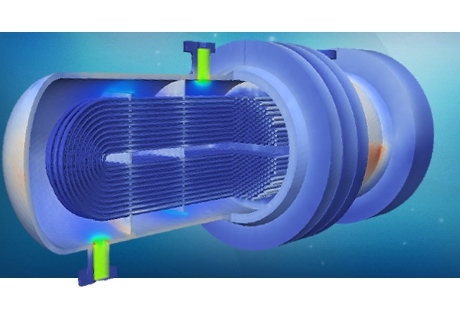Food and beverage production
Food engineers design and develop processes and equipment in order to convert raw agricultural ingredients into safe and nutritious consumer food products. The vast majority of the processes rely on either the movement of heat and mass, the transmission of electromagnetic fields or mechanics. The most important unit operations are generally fluid flow, heat transfer, drying, evaporation, contact equilibrium processes, mechanical separations (filtration, centrifugation and sedimentation), mixing and stretching.

Innovative technologies provide additional complexity and challenges for process analysts because of the interacting multiphysics phenomena. Traditional thermo- and fluid-dynamic principles of conventional processing are no longer sufficient to describe the entire process. These novel production techniques also incorporate additional physics, including high-pressure, electric and electromagnetic fields, competing chemical reactions and phase change, amongst others.
One of the many challenges is to employ state-of-the-art tools and knowledge such as computational models and simulations to aid the development of new products and processes. CFD and FEA can be applied to the majority of food processing systems, such as heat exchange processes, transport and storage, mixing, chemical kinetics and phase change.
Heat exchange processes
Most food industrial processes are based on thermal treatments, such as pasteurisation, sterilisation and freezing. Modern heating technologies take advantage of other physical phenomena such as high hydrostatic pressure, electric and electromagnetic fields and pressure waves. These innovative technologies allow food engineering to develop new food products, but also improve the safety and quality of conventionally treated food through milder processing.

Thermal modelling techniques, including the utilisation of computational methods such as CFD and FEA, have helped food process designers not only to optimise the efficiency of their heating process but also develop innovative solutions for better quality food production. Fluid dynamics and thermal modelling can be used to optimise processes such as baking, deep frying, freezing and thawing, vacuum cooling and microwave heating. For food processing equipment manufacturers, on the other hand, FEA has been a widely used tool. Thermal-stress analysis in combination with fatigue studies for equipment with cyclical loading has been of extraordinary significance in optimising ovens, fryers, refrigerators and heat exchangers.
Homogeneous cooling and heating for uniform product treatment has been of paramount importance to ensure a consistent quality of produce. Uneven heat transfer and large temperature gradients can lead to substantial heat exposure and temperature differences on the final products, especially in large-volume industrial vessels, resulting in greater rejection rates. PRE Technologies have developed a set of computational tools and models to help equipment manufacturers and food producers reduce the product variability in the final food production as well as optimise the energy consumption of the heating and cooling processes.
Momentum transfer and mixing processes
Most food production processes rely on some form of momentum transfer. Whether in solid or liquid production, conveyors, retorts, static or dynamic mixers, vibrators or pipelines are widely used to transport the raw materials through production and delivery. Transport equipment is normally subjected to cyclical loading and vibrations, with the risk of unanticipated and catastrophic failure by fatigue. Finite element analysis combined with fatigue theory and a correct material modelling will aid designers prolong the transport equipment useful life. In addition to fatigue, high speed fluid transport in combination with suspended solid particles may lead to erosion wear on certain parts of the system that can be assessed using computational models.
Some production, on the other hand, requires mixing of various ingredients, often with very diverse physical properties (density, viscosity, surface tension), increasing the complexity of the process and making it challenging to obtain a homogeneous final product. Blending, stretching and agitation are some of the processes that can be modelled using modern fluid dynamics techniques. Newtonian and non-Newtonian fluids can be modelled and dynamic transient analyses will show the designer the expected mixture quality after certain number of cycles as well as the areas of the design where stagnant zones are likely to occur, impeding the correct mixing of the ingredients.
Mass transfer and chemical reaction processes

Modern food production relies on increasingly complex chemical processes that often involve phase change and other mass transfer mechanisms. Spray dryers, high pressure – high temperature devices, enzyme reactors and condensers are some examples of equipment where chemical reactions and mass transfer must be carefully dimensioned and assessed.
1D chemical kinetic models are used for the dimensioning of the different stages of the production as well as for the development of food preservation processes to ensure safety. However, these 1D models pose a severe limitation, especially when process equipment and transport devices include relevant 3-dimensional features. Variable concentration of the reactants can have a major impact on the prediction of resulting production rates.
Computational fluid dynamics in combination with detailed chemical kinetics simulation can overcome this problem by explicitly modelling the full 3D volume and taking into consideration the concentration of each individual species in the reaction rates. Also, the use of CFD for mass transfer processes involving heavy endothermic or exothermic reactions can help process designers optimise their processes without the need of large investments in testing programs.
For more information on other services for food production systems, please contact us here.
Our services for this sector
Heat exchange equipment
- Thermal CFD for heating and cooling equipment: Freezing, thawing and pasteurisation
- FEA Thermal-stress and fatigue calculations
- Plate, shell and tube heat exchanger optimisation
- Heating and cooling process homogeneity assessments
Mixing equipment
- CFD for agitators, static and dynamic mixers
- Conveyors, vibrators and pipeline studies: Stress and fatigue
- Mixing and blending CFD analysis: Solid/solid, liquid/solid and gas/liquid
Reactors
- Chemical reactor analysis: Endo- and Exo-thermic reactions
- Spray dryers modelling: Nozzle optimisation and chamber fluid dynamics
- Thermal and mechanical analysis for water-cooled reactors
- Chemical kinetics models for performance prediction







